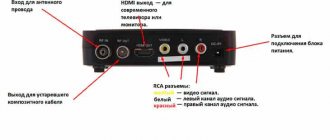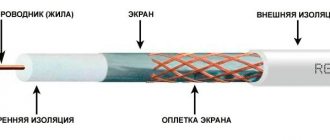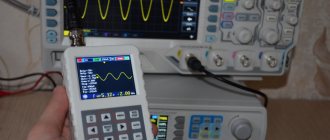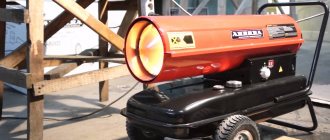Choosing satellite television means having the opportunity to have a huge number of channels in HD and SD resolution. Unlike cable TV, satellite TV is available everywhere. All you need is a satellite dish and a decoder. Installation and configuration of equipment have an affordable price. And if you are well versed in electronics, then they will not affect your budget at all - do everything yourself. If you decide to purchase a ready-made satellite TV package with equipment from Russian operators, then know that from time to time they offer very attractive promotions and installment plans.
Satellite dishes
One way or another, you need information about what features different satellite dishes have in order to choose your option.
General characteristics
A satellite dish for a TV is the first link in the entire home satellite installation. The choice of her model deserves your attention. A properly selected design will last over ten years. The exception may be rare atmospheric conditions such as tornadoes and storms.
Despite their apparent external similarity, satellite antennas have a lot of design differences. Not all devices for receiving communications from a satellite are round and point straight towards the sky. There are complex array and multivibrator antennas that have different radiation patterns. For which a high noise level is allowed, because they perform no less important functions than receiving television programs.
How does a satellite dish work?
A satellite television antenna is used to receive a television signal from a space satellite. The parameters of the dish itself and its converter largely determine the quality of image and sound that the satellite decoder will give you on your TV screen. Let's consider the principle of their operation.
Satellite dish operation
The signal level received from a satellite on earth is very small compared to its original level: attenuation is about 200 dB. This is understandable: the distance that separates the earth from the satellite is about 36,000 km. You can only receive a signal strong enough to watch programs if you concentrate it as much as possible. It is this function that is performed by the satellite wave receiver, which is a curved surface, colloquially called a dish.
The waves sent by the satellite to the earth are reflected by the inner surface of the antenna, obeying the laws of optics, and are concentrated at a point called the focus. At this point the receiving head of the transducer is located, a device for converting high-frequency vibrations into a cable signal.
Setting up satellite TV
First, install the antenna on the brackets:
Installing the plate on the brackets
Installing heads when tuning a satellite dish for three popular satellites Amos, Sirius and Hotbird:
Satellite TV heads tuned to three popular satellites - the so-called dragon
One of the most difficult, but at the same time important stages, which can mainly affect the quality of signal transmission. When setting up antennas, you should be extremely careful so as not to accidentally fall. Follow safety precautions. If the weather outside is bad, rain, strong wind or snow, then it is advisable to postpone the installation and configuration to another day.
Primary adjustment is carried out by turning the heads
After you have connected the equipment, make sure that there is a signal at all. To do this, look at the screen. If you see at least some image there, it means that you are on the right track. When you manage to catch a signal, and this may not happen right away, you can start setting up the video. If you can’t achieve results, then most likely you have made a mistake with the installation location.
The signal quality is checked on the TV device
To start setting up video, try to slowly start rotating the antenna around its axis. It is advisable that you be able to look at the TV at this moment, or that someone could tell you. Over time, you will notice that the picture and sound become clearer.
Turn until the quality begins to satisfy you. Then the transponders are configured:
Transponders and frequencies
After that, you can consider that you have completed the setup. Now you can not worry and enjoy watching.
Setting up satellites on satellite television using the example of a “dragon” - installation, frequencies, transponders, current channels for 2021:
What types of satellite dishes are there?
Since the discovery of satellite communications, many types of wave receivers have been created for receiving and transmitting signals. Each type has found its own ground application depending on the purpose of the satellite communication system:
- mobile connection;
- satellite telephony and radio broadcasting;
- navigation via orbital communications;
- Internet;
- meteorology;
- communication with spacecraft;
- TV.
You may be interested in: Transponder – what is it?
Ordinary TV viewers are more familiar with mirror-type (offset) devices. The most famous family of satellite dishes, which is presented in stores. They differ in the shape of the reflector, are different in diameter, have different surface utilization rates and are accepted in different ranges.
Offset
Offset satellite dish
This satellite TV antenna has a reflective bowl in the shape of an ellipsoid. Radio waves from satellites that bounce off the working mirror are concentrated not in the geometric center of the figure, but in its lower focus. A bottom focus dish does not require a large elevation angle. This design of the mirror in offset satellite antennas made it possible to achieve more stable reception, because The signal converter does not cast a shadow on the surface of the bowl and does not cause noise.
Direct focus
direct focus satellite dish
This type of wave receiver has a working mirror surface in the shape of an oblate paraboloid. This symmetrical reflector geometry makes it possible to achieve good capture of radio waves arriving at its surface and maximum redirection of them to the converter. It is mounted on holder consoles directly above the central point of the plate.
Toroidal
Toroidal satellite dish
A toroidal dish, a type of multibeam antenna, is a progressive solution that replaced mirrors on rotating mechanisms. Figuratively speaking, this is not just a “plate”, but a whole service, consisting of a large dish, a saucer and several converter cups. This model has two reflectors (reflectors) and this is a huge advantage for receiving TV from different satellites. Before radio waves hit the receiving surface of the converting head, they will be reflected twice: first hitting a large mirror, and then refracting from it to a small one, where they are focused on the desired converter.
Manufacturers of toroidal antennas guarantee that they are equipped with up to sixteen converters. This opens up very great opportunities for the viewer: redirecting such a device to work with signals from different satellites can now be done without getting up from your chair in front of the TV.
PAR
Phased antenna
Phased array antennas are actually a rarely used class of satellite equipment. They were popular in the 90s of the last century, which they owe to Nokia. Having a list of limitations, narrowband, labor-intensive production, and hence high cost, phased arrays are not actively used by consumers of television equipment.
Based on the use of controlled phased arrays, the development of mobile and portable satellite communication receivers is being carried out.
Traveling wave antennas
Directional antenna
This is a directional type receiver. The signal in it propagates in the form of a traveling wave along the geometric axis of the structure. In terms of its structure, it is a collecting line on which several vibrators equidistant from each other are attached. This antenna is broadband (VHF and UHF waves) and does not require adjustment. Common among meteorologists and in amateur radio communications.
Weakly directional antennas
Weakly directional wave antenna
Weakly directional wave receivers have found their application in those places of satellite reception where it is not possible to constantly redirect the position of the receiving device. The antenna produces a lot of noise due to its wide radiation pattern. But this is not critical for capturing relayed waves from low-orbit satellites.
You may be interested in: Tricolor smart card
Setting up MTS television equipment
The next step is setting up the television. The process differs depending on the equipment used.
HD set-top box
To set up an HD set-top box, you need:
- Turn off the power, install a smart card in the special slot, and plug in the device.
- Turn on the receiver and TV.
- On the TV, select the desired connector (HDMI or AV) to see the image from the set-top box.
- Depending on the model of the set-top box, the user will immediately begin searching for channels or will see a setup wizard. In it he will select the menu language, picture size, set the parameters of the satellite, transponder and LNB. After making these changes, he will be able to tune the channels on the TV.
- After the search for TV channels is completed, the TV will begin broadcasting the first channel found.
Next, you will need to activate the equipment.
CAM module
To set up a TV with a CAM module, you need:
- Disconnect the TV from the network, connect the antenna cable.
- Install the TV module into the CL slot of the TV, place a smart card in the module.
- Connect the TV to the network and start it.
- Open settings, go to search for satellite DVB-S2 channels.
- Select the desired satellite or add a new one with the parameters indicated below.
- Search for channels.
When adding a new satellite, use the following parameters:
- Satellite – ABS-2;
- Modulation – DVB-S2, 8PSK;
- Home transponder frequency – 11920 MHz;
- Symbol rate – 45000 Msymbol/sec;
- LNB polarization – vertical;
- LNB local oscillator frequency – 10600 MHz;
- LNB power – on;
- Tone 22 KHz – active.
After completing the channel search, activate the equipment.
Interactive console
To set up an interactive set-top box, you need to insert a SIM card into a special slot, and then start the equipment. At the first start, the 3G signal is analyzed and initialized. This is a long process, you need to wait for it to finish.
Next, the subscriber will be asked to activate the equipment using one of the available methods. Regardless of the option chosen, the subscriber will have access to demo television viewing for 10 days.
Next, the user needs to create a profile. Here you can set an age limit and create a password to access channels.
The subscriber can set up and connect satellite TV from MTS independently if he does not want to pay additional money for installing the equipment. The guide above will help him with this. Once setup is complete, you will need to activate the equipment. After activation, the user will have 10 days of test viewing, during which the operator will have to receive the original contract.
Author of the site
Natalya Technical specialist, user support on mobile communications issues.
Write to the author
I will try to help every user in solving their problems, the most common ones you will find on the site. You can read about me here Natalya Timofeeva.
How to choose a satellite dish
Most satellite TV antennas look very similar. Modern offset-type plates are especially popular (the converter is located not in the center of the dome, but at the bottom). The reflectors have a diameter of 45 to 120 cm. Their important element is the converter - a device in front of the dish that collects and amplifies the reflected signal, delivering it to the satellite receiver.
When choosing a satellite dish, you must first consider the location of its installation. She must “look” to the southern side of the sky without encountering obstacles. They can be a wall, a chimney, a hill, or even a tree. In this regard, the best place for the antenna would be the roof. The more difficult the terrain, the larger the antenna diameter must be chosen. Small reflectors are best suited for installation on tall buildings, since large dishes at high altitudes are more susceptible to wind loads.
What equipment is needed to install satellite TV and Internet
The consumer can easily purchase the necessary equipment sets for satellite TV from different satellite TV and Internet operators, which come in different levels of configuration. The main difference is the price. You should be careful when choosing, because not every set may meet your requirements. If you can’t decide, then you should ask for help from a person who understands this issue. He will select the necessary model for you, without unnecessary problems.
- Incomplete set : includes a receiver, a module with an access card and all the documentation necessary for the user. This option is the most economical of all possible, but it lacks many of the necessary elements that you will need to install and configure satellite television. It is worth purchasing if you already have the elements you need at your disposal.
- Complete kit : it includes all the necessary components, such as; receiver, antenna, converter, module, cables and all documentation. This set is completely self-contained and does not require extra costs for additional parts. If you have never used satellite television before, then this will be quite enough for you.
- Expanded set : completely corresponds to the contents of the previous one, but as an addition there is a second receiver. You can use it to connect a second TV. This set is ideal for a large family, so that all its members can enjoy watching their favorite programs in good quality, without the risk of missing any important moment or having to wait their turn.
A set of equipment for connecting satellite TV - a receiver, a set of cables, brackets and fittings for installing a dish antenna, a signal converter, the antenna itself, Dysik, heads
Material of manufacture
What a satellite dish consists of, namely the construction material, essentially has no effect on the quality of the received signal. The main thing is that it fulfills its reflective function. But there is another important criterion: satellite dishes are always installed outdoors, which means they must be resistant to various external factors.
The coating of the dish is designed to effectively protect it from corrosion, and in this regard, antennas made of aluminum have proven themselves well; they make up the majority of manufactured models. But they have one minor and completely removable drawback - a certain softness. A gust of strong wind can tear the antenna bowl off its mounts: the screws that come with the fasteners can be torn out through the soft metal and your satellite dish may well become “flying.” From the outside it may look comical (a UFO is flying), but in reality it is dangerous, because the device is installed at a height and it is unknown where it will land.
Despite this, we recommend aluminum plates, but with rigid mounting. You can strengthen the mount yourself by using stronger screws and larger washers. A satellite dish made of aluminum, even after several years, will look like new, but will cost you more.
A more economical option is a steel antenna. There is no doubt about its strength; its service life is more than 10 years. If this seems not enough to you, then do not forget that progress is unstoppable, and during this time technology will definitely step forward, as is the case with information compression. But when buying a steel plate, inquire about its protective coating; if it is of poor quality, it may rust.
Plastic satellite dish
Plastic dishes with metal coating are an innovation in the satellite TV equipment market. The ubiquitous plastic has penetrated here too. Whether this is good or bad, time will tell. According to some observations, the price of these antennas is quite high, and the performance is worse than that of aluminum dishes; there is no need to talk about durability. So nothing interesting, except for easy installation.
In areas where frequent and strong winds blow, where installation is carried out at high altitudes, a perforated metal antenna is recommended. The “sieve” effect helps reduce the windage of the antenna.
Installation and connection of satellite TV
The first step is to purchase all the necessary components and enter into an agreement with the provider. Without this, it makes no sense to even think about how to move to the next stage.
MTS installation equipment kit
Decide on the installation location. Will it be an apartment, a private house or a cottage? Location plays a very important role.
The antenna installation address will help you decide where to point the dish depending on the subscriber’s place of residence
Once you have chosen a location, try to sort out all the components. Each item in the set is there for a reason; there will be no unnecessary parts that would not be useful to you. Find out what they are for. Don’t be afraid to go online for answers or ask your friends.
Then you should install the antenna. It can be installed both on the roof of the house and on the wall. The main rule that should be followed is that there should be no obstacles to the signal. Therefore, installing it under a tall tree or canopy will be a very bad idea, since the broadcast will be of poor quality or the signal will be constantly lost.
Before installation, determine where the signal will come from. If there are obstacles on the way that can be calmly removed, then do it like this. This way you won’t have any unnecessary problems with broadcasting.
Afterwards, check the angle of the antenna, and if everything is fine, then you can return home to carry out all the necessary manipulations inside.
Connect the convector to the receiver, and connect the receiver to the TV. Check the functionality of this design. Make sure the receiver is transmitting the signal to the screen correctly. After this, you can start viewing the content.
Connecting and installing satellite television using the example of MTS TV - video instructions:
Why size matters
The key to trouble-free TV reception from satellite is the purchase of high-quality equipment, its correct installation and selection of the optimal size of the dish itself. It is with this last point that troubles often arise. Some TV viewers are so concerned about aesthetics that they immediately reject the decision to buy a large antenna, but often the diameter of the antenna is the determining criterion in areas with problematic signal reception. The larger the antenna, the better it captures the signal, for example in case of bad weather. A dish with a diameter of 60 cm, although it looks compact, does not guarantee the absence of signal interruptions. The optimal solution for stable reception of channels from a satellite, if you have space, is to install a satellite dish with a diameter of 80-90 cm.
You may be interested in: Satellite Tricolor TV
| Comparative characteristics of antennas with large and small diameters | |
| Small diameter | Large diameter |
| It is lightweight and easier to attach, for example, to balcony railings | its installation is complicated by significant weight |
| no need for reinforced holders | takes up more space |
| does not hide illumination | installed on a balcony, can block natural light |
| it is more difficult for it to catch a signal, but it is unlikely to catch interference from adjacent satellites | picks up satellite signals more easily, but may pick up interference from nearby satellites |
| more susceptible to weather conditions (clouds, snow and rain) | less susceptible to weather conditions |
Here are some recommendations for antenna sizes:
- stationary antenna for receiving channels from one satellite – diameter from 55 cm to 80 cm;
- antenna with one or more converters for receiving signals from several satellites - diameter from 80 cm to 105 cm or more. It all depends on how many converters you plan to install (one converter – one satellite). If there are more than two, it is better to buy an antenna with a diameter of 90 cm;
- rotating plate - diameter ranges from 80 cm to 140 cm. The rotating mechanism is not a popular option.
Advantages and disadvantages
If we compare the two most popular types of television satellite receivers - with direct focus and with shifted focus - the picture will be as follows.
Direct focus paraboloid mirrors are available with a larger circumference to reduce transducer interference. These antennas will be useful for those who need a strong signal, and they are also characterized by broadband. But their main disadvantage lies in the complexity of installation, which is made difficult by the bulkiness of the plate and the requirements for its placement. In a direct-focus dish, precipitation will inevitably settle and accumulate, because it “looks” at the sky line at an obtuse angle. They cover the reflective surface, blocking the signal, and cause corrosion, which has a detrimental effect on the working surface. During snowy winters, you will have to clean the antenna bowl frequently.
Offset plates have a number of advantages:
- they are more compact, but this has little effect on the signal quality;
- they are easier to install;
- the position of their fixation prevents the accumulation of sediments;
- have the ability to connect an additional converter.
A slight inconvenience is the periodic cleaning of the offset plate converter from frozen sediments, because... its receiving surface faces the sky. This may make the device difficult to operate in winter.











